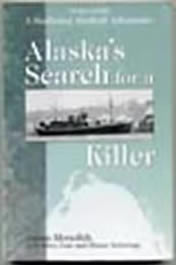Sail to Alaska without getting wet, cold, or seasick
Alaska’s Search for a Killer: A Seafaring Medical Adventure 1946-1948
© Susan Meredith with Kitty Gair and Elaine Schwinge
© 2007 Beth Helstien
I don’t like to be wet or cold, but I love to imagine Alaska, the Arctic and Antarctica. If, like me, you are an armchair adventurer, you might try this memoir by San Juan Island’s Susan Meredith. Susan writes about the two years she spent on the Alaska Public Health Ship MV Hygiene as a bacteriologist and x-ray technician. The primary mission during her two-year stint was to gather statistics on the cases of tuberculosis on the coastal population of Alaska from Nome south to the Canadian border.
She chronicles life aboard the little ship, the conflicts, and the friendships she made there. The ship, of course, was crewed by non-medical personnel, a captain, engineer, mate, cook, mess boy and staffed by a doctor, a nurse, Susan, the x-ray tech, a secretary, and sometimes a dentist. Interpersonal relations on board could be strained by tight quarters, the long time between visits to towns with amenities like bars and telephones, and the trying conditions of sailing the Bering Sea or dealing with Alaskan winters. Imperious doctors, alcohol and distance from home would test the patience of many of the crew.
She describes her first sight of native kayaks, purchasing her first baidarka, and learning to balance on her knees in it so she could paddle about on her owns. If you know Susan, you know that kayaking became a life-long joy for her, where she get around without the stigma of her polio limp.
One of the things I loved about this book is how the mission shapes the narrative. Its not an adventure story but a history, based on actual diaries and letters, of a tough effort to make a difference in the lives of the Alaskan people, especially the native peoples.
The descriptions of the survey for tuberculosis are fascinating. The enormous percentage of the population infected with TB and the high number of persons with the disease was discouraging. The mission, to survey for the incidence of TB, didn’t provide a lot of time or other resources for treating the sick people they found. Language, culture and economic barriers meant that what health and treatment advice was given might not be implemented. But the medical staff was able to help many of the villagers they met, and TB rates in Alaska eventually dropped.
If you’d like to sail to Alaska without getting wet or cold, try reading Alaska’s Search for a Killer.
Alaska’s Search for a Killer, like all books reviewed here, may be found at the San Juan Island Library.
